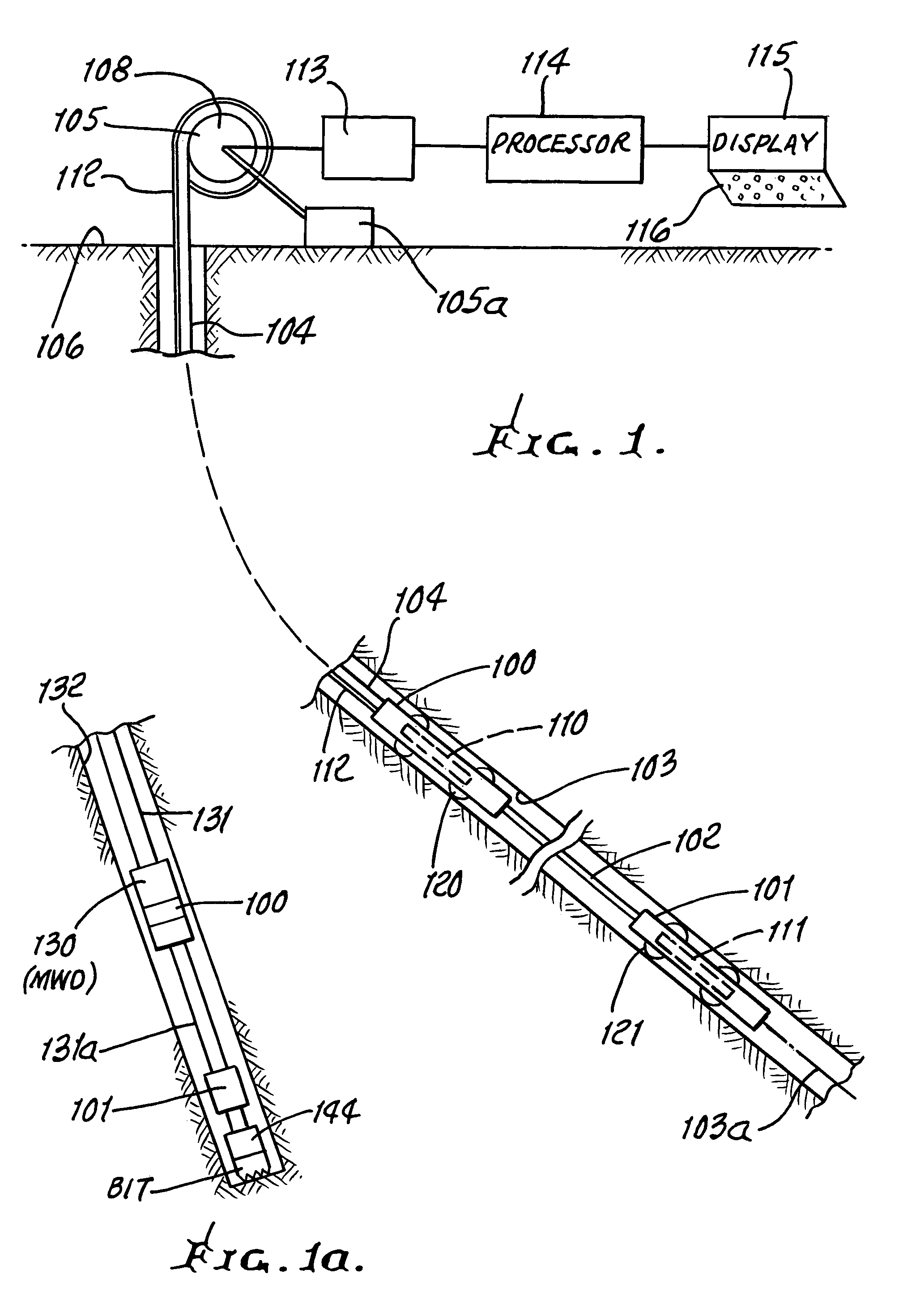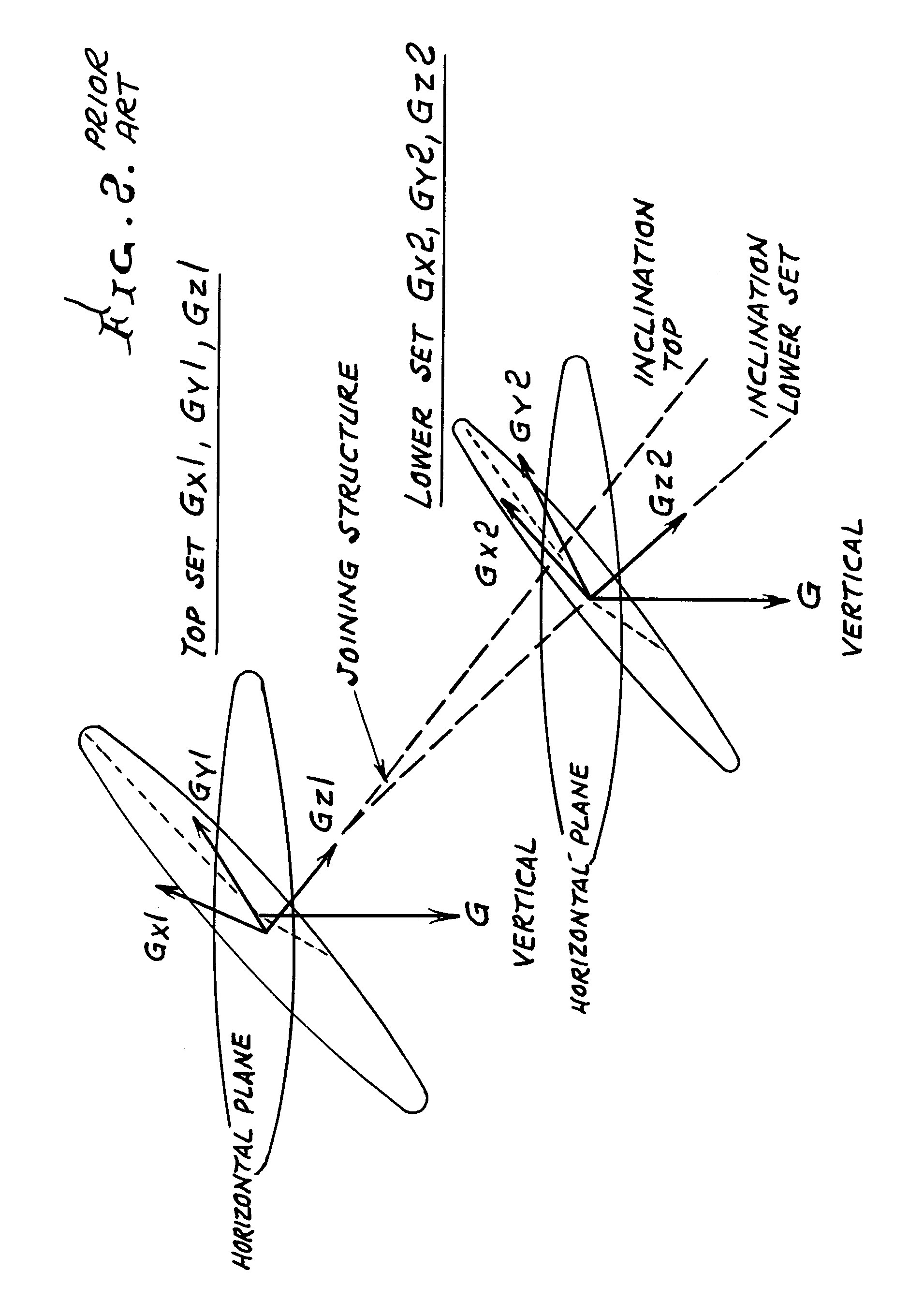Method for computation of differential azimuth from spaced-apart gravity component measurements
a gravity component and gravity computation technology, applied in the field of method for computing differential azimuth from spacedapart gravity component measurements, can solve the problems of not consistently obtainable acceptable results for all possible input conditions, and demonstrating less geometrical accuracy than the preferred method
- Summary
- Abstract
- Description
- Claims
- Application Information
AI Technical Summary
Benefits of technology
Problems solved by technology
Method used
Image
Examples
embodiment
PREFEREED EMBODIMENT
[0042]Since the method of this invention determines only changes in the azimuth orientation of a borehole between two spaced-apart locations along the borehole, the initial azimuth angle may be considered as zero. This simplifies the equations below without any loss in the general usefulness of the method.
[0043]Given an X,Y,Z earth fixed coordinate set having X horizontal at any arbitrary, assumed zero, azimuth angle with respect to north, Y horizontal and normal to X and Z down and given an x1,y1,z1 borehole fixed coordinate set for a first set of gravity component measurement devices related to X,Y,Z by rotations:
[0044]Alpha, α, about Y which is a tilt or inclination angle
[0045]Beta, β, about the new Z′ axis which is a gravity highside angle
The x1,y1,z1 coordinate set is related to the X,Y,Z coordinate set by the direction cosine matrix C1 whose elements are:
C1(x1,X)=Cos(α)Cos(β)
C1(x1,Y)=Sin(β)
C1(x1,Z)=−Sin(α)Cos(β)
C1(y1,X)=−Cos(α)Sin(β)
C1(y1,Y)=Cos(β)
C1(y1,Z)=...
first alternative embodiment
[0050]Given an X,Y,Z earth fixed coordinate set having X at any arbitrary angle with respect to north, Y normal to X and Z down and given an x,y,z borehole fixed coordinate set for a first set of gravity component measurement devices related to X,Y,Z by rotations:[0051]Alpha, α, about Y which is a tilt angle[0052]Beta, β, about the new Z′ axis which is a highside angle
And given another x,y,z borehole fixed coordinate set for a second set of gravity component measurement devices related to the prior x,y,z borehole fixed set by rotations:[0053]Gamma, γ about the new Y″ axis which is a bend angle of the drill string[0054]Delta, δ, about the new X′″ axis which is a bend angle of the drill string orthogonal to gamma
This last x,y,z coordinate set is related to the X,Y,Z coordinate set by a nine-element direction cosine matrix. The elements of that matrix are:
C(x,X)=−Sin(α)Sin(γ)+Cos(α)Cos(β)Cos(γ)
C(x,Y)=Sin(β)Cos(γ)
C(x,Z)=−(Cos(α)Sin(γ)+Sin(α)Cos(β)Cos(γ))
C(y,X)=Sin(δ)(Sin(α)Cos(γ)+Cos(α)...
second alternative embodiment
[0055]An approximate solution to the problem described above is found from U.S. Pat. No. 4,071,959, Gyro Stabilized Single-Axis Platform, at Column 3, Line 5, to Column 5, Line 51. This patent provides the basis for the Sperry Sun B.O.S.S. survey tool. That tool has a single set of accelerometers mounted on a gyro stabilized single axis platform having its stabilization axis along the borehole. As the tool travels along the borehole, it follows the bends of the borehole but is, in effect, torsionally rigid about the borehole axis. Thus subsequent sets of accelerometer measurements are equivalent to the mode described above. This solution is based on the small-angle assumption for which the sine of the angle is the angle and the cosine of the angle is one.
Equation E of the patent shows the solution as:
ΔΨ=−(1 / Cos Θ))ΔΦ2
[0056]where ΔΨ is the change in azimuth between the two sets of data
Θ is the inclination angle ΔΦ2 is the change in high side angle between the two sets of data
Placed i...
PUM
 Login to View More
Login to View More Abstract
Description
Claims
Application Information
 Login to View More
Login to View More - R&D
- Intellectual Property
- Life Sciences
- Materials
- Tech Scout
- Unparalleled Data Quality
- Higher Quality Content
- 60% Fewer Hallucinations
Browse by: Latest US Patents, China's latest patents, Technical Efficacy Thesaurus, Application Domain, Technology Topic, Popular Technical Reports.
© 2025 PatSnap. All rights reserved.Legal|Privacy policy|Modern Slavery Act Transparency Statement|Sitemap|About US| Contact US: help@patsnap.com



